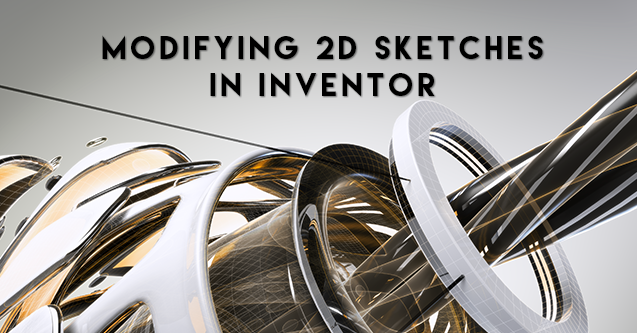
Autodesk Inventor is a powerful CAD tool that primarily uses parametric modeling. However, there’s much more this tool can do in regards to modeling. Inventor comes with vector-based modeling tools that can modify 2D Sketches in Inventor. It makes it a great tool for anyone moving to the 3D world with a traditional 2D background.
In this session of Autodesk Virtual Academy, we go over the various tools such as trim, extend, and offset found in Inventor to help modify and optimize your 2D sketches. We also illustrates how to share your sketches and when this feature might be useful.
Watch the Webcast
If you missed the webcast, you can watch the full session below. Be sure to subscribe to our YouTube channel to get notified when these videos post each week.
Correction: During the webcast, we misspoke when stating you cannot edit a feature (like extrude) to include the new sketch objects. It actually IS possible if you hold SHIFT + select the geometry you wish to extrude. With that in mind, it should be noted this should be used if you want the features of a new geometry to match the old version. If you want to modify the extrude, cut, or other feature to be slightly different, a share sketch is the best option.
Q & A
At the end of every webcast, we take time to answer questions viewers may have on what was presented. Here are a few questions asked.
What is the difference between sharing a sketch and making the sketch visible through the “right click” menu?
As noted by the customer, there is an option to turn the visibility of the sketch back on from the “right click” menu. Not only does this show the sketch again, you can also create features off the sketch. Essentially, it’s identical to the share sketch feature as you’ll notice a shared sketch appear immediately after you create a new feature with the “re-revealed” sketch.
How do I know where the current “0,0” is when using precise input?
The starting point is the origin of the entire sketch and moves in the direction X and Y according to the global coordinate system.
Join the Autodesk Virtual Academy community and never stop learning.